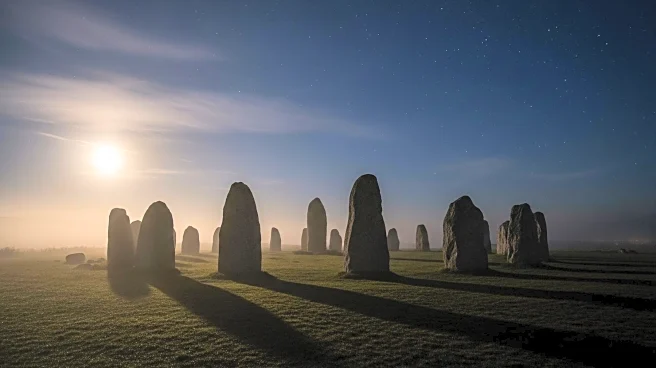What's Happening?
Recent research has revealed that the Altar Stone at Stonehenge, previously believed to originate from Wales, actually comes from the Orcadian Basin in Scotland. This discovery was made by a team from Curtin University, who analyzed the chemical composition of mineral grains within the stone. The findings suggest that the stone was transported over 466 miles to its current location in southern England, raising questions about the trade networks and societal organization during the Neolithic era. The study, published in the journal Nature, challenges the long-standing belief that the stone came from the Brecon Beacons area of southeast Wales.
Why It's Important?
The identification of the Altar Stone's Scottish origins has significant implications for understanding prehistoric Britain. It suggests a higher level of societal coordination and advanced transport methods than previously thought. The possibility of a marine shipping route along the coast of Britain indicates long-distance trade networks during the Neolithic period. This discovery provides new insights into the complexity of societal organization and the capabilities of ancient communities in transporting massive stones over long distances.
What's Next?
The research team plans to further investigate the exact point of origin of the Altar Stone within Scotland. This ongoing study may uncover more details about the trade routes and societal structures of Neolithic Britain. The findings could lead to a reevaluation of other stones at Stonehenge and their origins, potentially reshaping historical narratives about the monument and its construction.
Beyond the Headlines
The discovery of the Altar Stone's origins highlights the intricate cultural and societal dynamics of prehistoric Britain. It challenges assumptions about the technological capabilities and social organization of Neolithic communities, suggesting a more interconnected and sophisticated society than previously understood.













